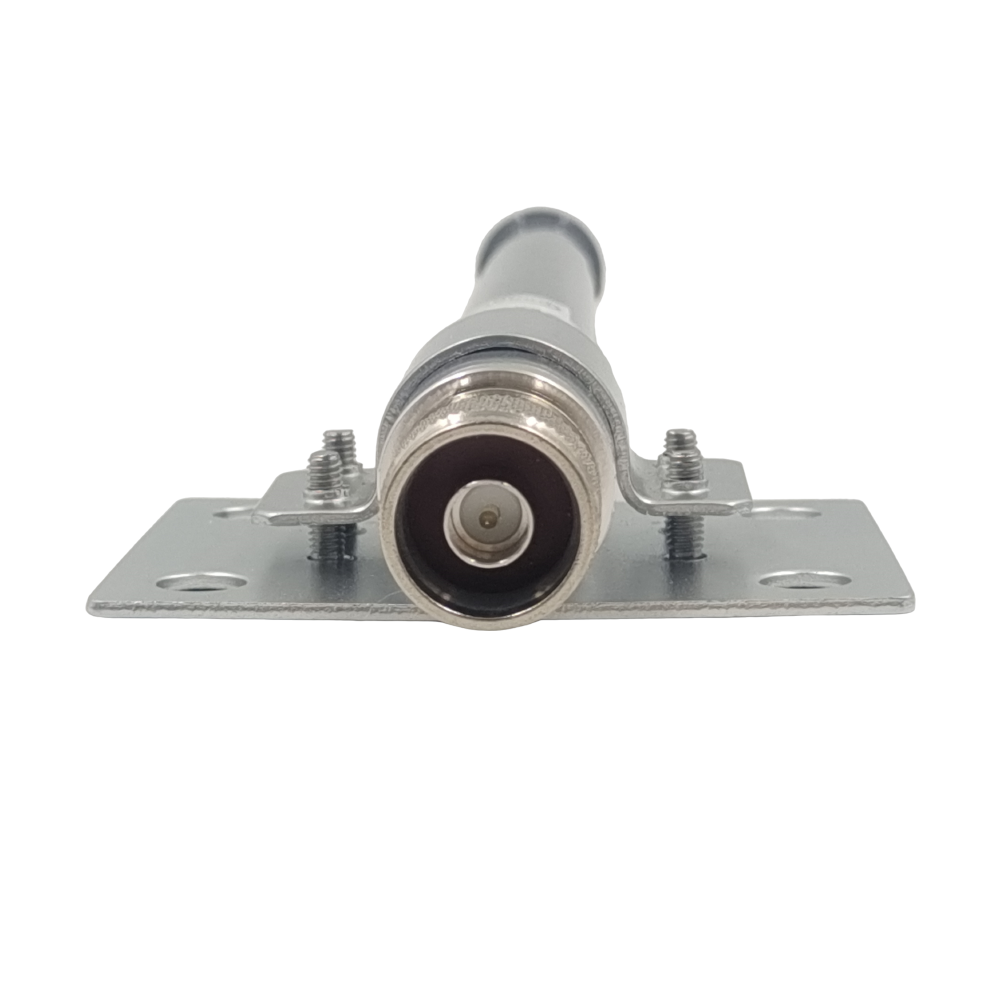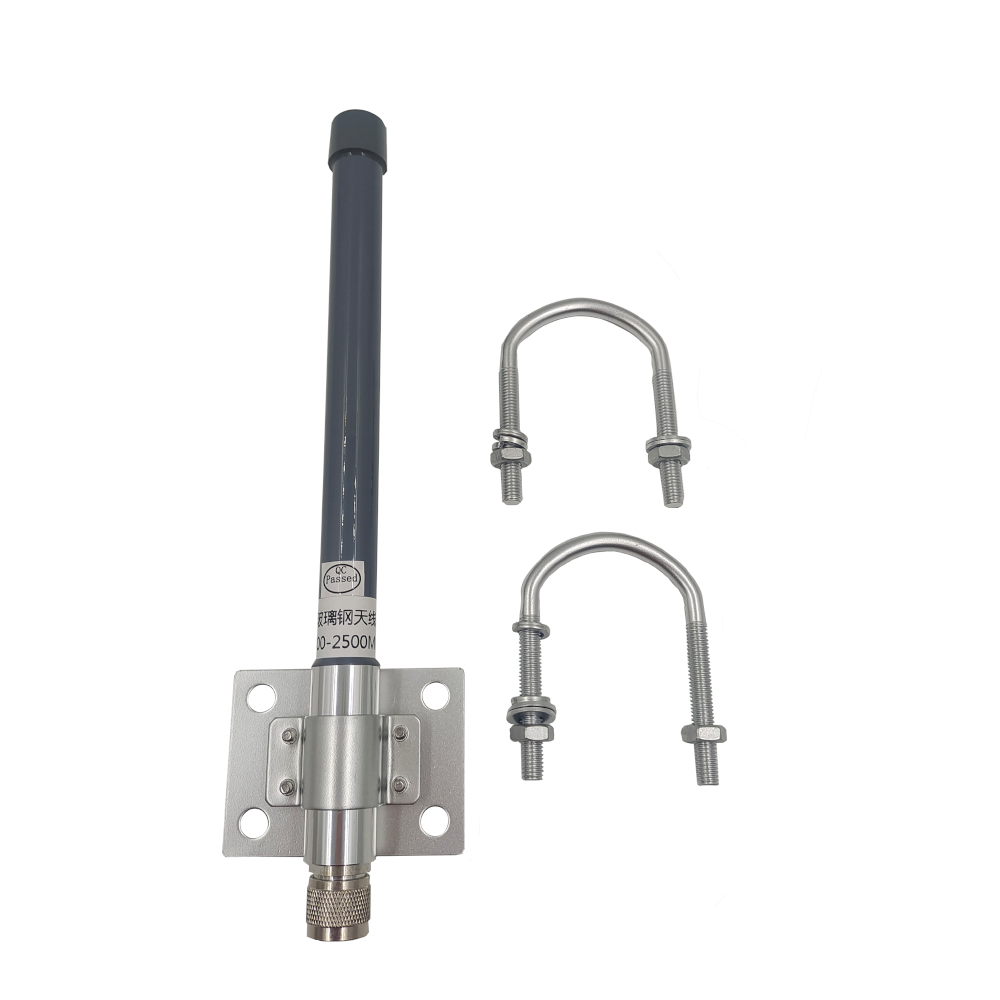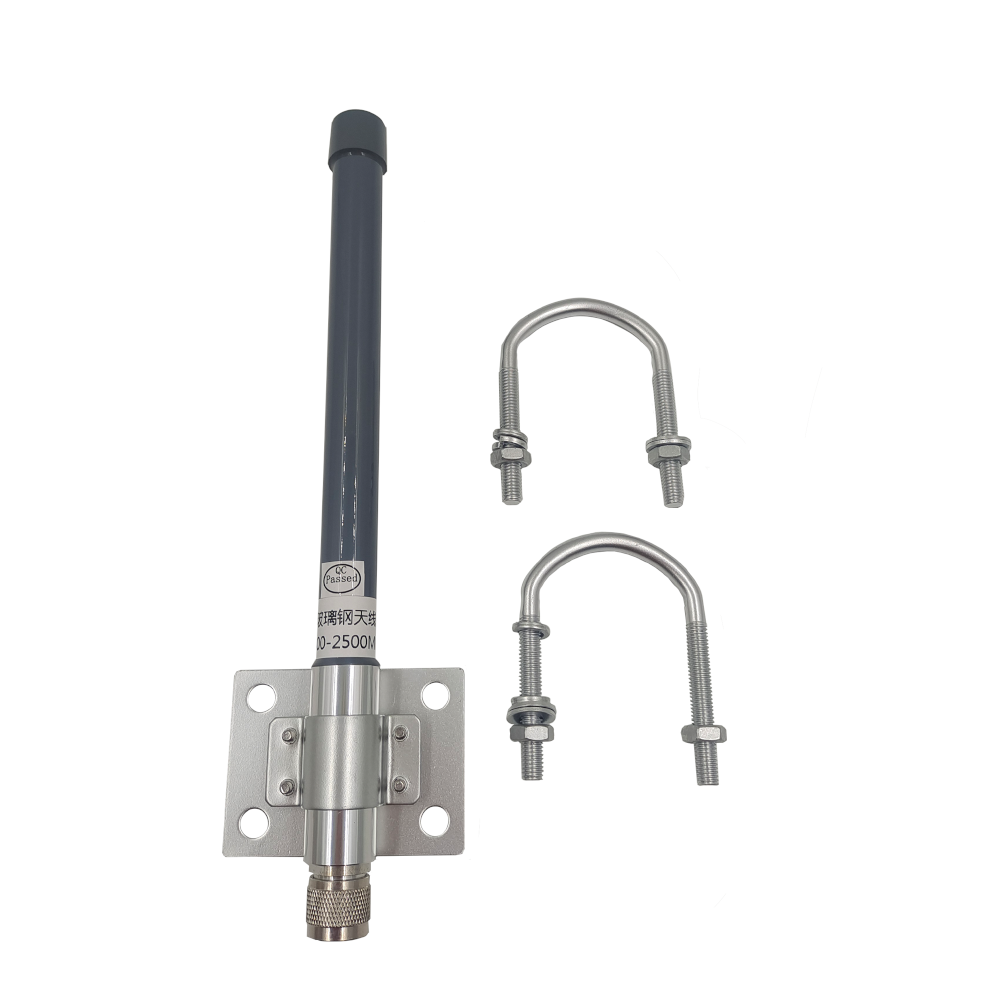What is an SMD GPS Antenna?
An SMD GPS antenna is a type of GPS receiver antenna that is designed to be mounted directly onto the surface of a printed circuit board (PCB) using surface - mount technology (SMT). Unlike traditional through - hole antennas, which require holes to be drilled in the PCB for installation, SMD antennas are soldered onto the PCB's surface, making them ideal for automated manufacturing processes and compact device designs. These antennas are specifically engineered to receive signals from the Global Positioning System (GPS) satellites, which operate primarily in the L1 frequency band (1575.42 MHz) for civilian applications. Their small form factor, often measuring just a few millimeters in length, width, and height, allows them to be seamlessly integrated into a wide range of portable and space - constrained devices.
Construction and Design
Core Components
The construction of an SMD GPS antenna involves several key components working together to ensure efficient signal reception. At the heart of the antenna is the radiating element, which is responsible for capturing the GPS satellite signals. This element is typically made from conductive materials such as copper or silver, which are patterned onto a dielectric substrate. The dielectric substrate, usually composed of materials like ceramic, FR4, or Rogers, provides mechanical support to the radiating element and helps in shaping the antenna's electrical properties. The choice of dielectric material is crucial as it affects the antenna's gain, bandwidth, and efficiency. For example, ceramic substrates with a high dielectric constant allow for a more compact antenna design without compromising performance.
In addition to the radiating element and dielectric substrate, SMD GPS antennas may also include other components such as a ground plane, matching network, and in some cases, a Low - Noise Amplifier (LNA). The ground plane is a conductive layer on the PCB that serves as a reference for the antenna's radiation pattern, helping to improve signal stability and reduce interference. The matching network is designed to ensure maximum power transfer between the antenna and the receiver by matching the antenna's impedance to that of the transmission line and receiver circuitry. This is essential for minimizing signal loss and optimizing antenna performance. Some advanced SMD GPS antennas integrate an LNA directly into the package. The LNA amplifies the weak GPS signals received by the antenna before they are transmitted to the GPS receiver, enhancing the overall sensitivity of the system, especially in environments with low signal strength.
Design Considerations
Designing an SMD GPS antenna requires careful attention to various factors to ensure optimal performance. One of the primary considerations is the antenna's size. Since SMD antennas are intended for compact devices, their dimensions are strictly limited. However, reducing the size can lead to a decrease in gain and bandwidth, so designers must strike a balance between size and performance. The radiation pattern is another critical aspect. GPS antennas typically require an omnidirectional or hemispherical radiation pattern to receive signals from satellites in various positions in the sky. The design of the radiating element and the ground plane is optimized to achieve this pattern, ensuring that the antenna can capture signals from different angles.
Environmental factors also play a role in the design process. SMD GPS antennas must be able to operate reliably in a range of temperatures, humidities, and vibration conditions, depending on the application. For example, antennas used in automotive applications need to withstand high temperatures and vibrations, while those in wearable devices must be resistant to moisture and mechanical stress. The integration with the PCB is another key consideration. The placement of the antenna on the PCB, the size and shape of the ground plane, and the routing of the transmission line all impact the antenna's performance. Designers often use simulation tools to model the antenna's behavior on the PCB and optimize these parameters to minimize interference and maximize signal reception.
Working Principles
SMD GPS antennas operate based on the principles of electromagnetic radiation and reception. GPS satellites transmit radio frequency (RF) signals in the L1 band, which travel through space and reach the Earth's surface. The radiating element of the SMD GPS antenna is tuned to resonate at this frequency, allowing it to efficiently capture the incoming signals. When the RF signals hit the radiating element, they induce an alternating current (AC) in the element. This AC signal is then transferred through the matching network to the receiver circuitry. In antennas with an integrated LNA, the weak AC signal is amplified at this stage to improve its strength before it is processed by the GPS receiver.
The GPS receiver uses the information contained in the signals, such as the time the signal was transmitted and the satellite's position, to calculate the receiver's location through trilateration. For accurate positioning, the receiver typically needs to receive signals from at least four GPS satellites. The performance of the SMD GPS antenna, including its gain, sensitivity, and ability to reject interference, directly affects the receiver's ability to acquire and track these signals, especially in challenging environments.
Advantages of SMD GPS Antennas
Miniaturization
One of the most significant advantages of SMD GPS antennas is their small size. Their compact form factor makes them ideal for use in small - scale electronic devices such as smartphones, smartwatches, fitness trackers, and portable navigation devices. This miniaturization allows manufacturers to design sleeker, more lightweight products without sacrificing GPS functionality. For example, in a smartwatch, an SMD GPS antenna can be integrated into the device's tiny PCB, enabling accurate location tracking without adding significant bulk.
Easy Integration and Mass Production
SMD GPS antennas are designed to be compatible with surface - mount technology, which is widely used in modern electronics manufacturing. This allows for automated assembly processes, such as pick - and - place machines, which significantly reduce production time and costs. The antennas can be easily soldered onto the PCB along with other SMD components, streamlining the manufacturing workflow. This ease of integration makes them a preferred choice for high - volume production runs, where efficiency and consistency are crucial.
Cost - Effectiveness
Compared to some traditional GPS antennas, SMD GPS antennas are often more cost - effective. The use of mass - production techniques and the simplicity of their design contribute to lower manufacturing costs. Additionally, their integration into the PCB eliminates the need for additional connectors and cables, which further reduces the overall cost of the device. This cost advantage makes SMD GPS antennas accessible for a wide range of applications, from low - cost consumer electronics to industrial devices.
Reliable Performance
Despite their small size, SMD GPS antennas offer reliable performance in many common environments. They are designed to provide sufficient gain and sensitivity to receive GPS signals in open sky conditions, and advancements in design have improved their performance in urban canyons and indoor environments to some extent. The integration of LNAs in some models enhances their ability to detect weak signals, ensuring that the GPS receiver can acquire and track satellites even when the signal strength is low.
Low Profile
The low - profile design of SMD GPS antennas is another key advantage. They lie flat on the PCB, which is beneficial for devices where height is a constraint. This is particularly important in thin devices such as tablets, laptops, and smart cards, where a low - profile component helps maintain the device's slim design.
Comparison with Other GPS Antennas
SMD vs. Patch Antennas
Patch antennas are a type of GPS antenna that is also commonly used in various applications. While both SMD and patch antennas are planar in design, there are some key differences. Patch antennas are typically larger than SMD antennas and are often mounted using through - hole or adhesive methods. They offer higher gain and better performance in some cases, especially in environments with strong interference. However, their larger size makes them less suitable for compact devices. SMD antennas, on the other hand, are smaller and more suitable for miniaturized electronics, although their gain may be slightly lower than that of larger patch antennas.
SMD vs. Helical Antennas
Helical antennas are three - dimensional antennas that consist of a coil of wire. They are known for their high gain and directional radiation patterns, making them suitable for applications where a strong, focused signal is needed, such as in some navigation systems for aircraft and ships. However, helical antennas are larger and bulkier than SMD antennas, and their directional nature makes them less suitable for devices that require omnidirectional signal reception. SMD antennas, with their omnidirectional or hemispherical patterns, are better suited for portable devices that need to receive signals from satellites in any direction.
SMD vs. Active External Antennas
Active external antennas are GPS antennas that are mounted outside the device, often connected via a cable. They typically offer high gain and excellent performance, especially in challenging environments where the device's internal components may cause interference. However, they add to the device's size and cost, and the cable can be a source of signal loss and reliability issues. SMD antennas, being internal and integrated into the PCB, avoid these problems, making them a better choice for compact, low - cost devices where external antennas are not feasible.
Applications of SMD GPS Antennas
Consumer Electronics
The consumer electronics industry is one of the largest users of SMD GPS antennas. Smartphones, in particular, rely heavily on these antennas for location - based services such as maps, ride - hailing apps, and geotagging. The small size of SMD antennas allows them to be integrated into the smartphone's PCB without taking up much space, ensuring that the device remains compact. Smartwatches and fitness trackers also use SMD GPS antennas to track users' outdoor activities, such as running, cycling, and hiking, providing accurate distance and route information.
Wearable Devices
Wearable devices, including fitness bands, smart glasses, and health monitors, benefit greatly from the miniaturization of SMD GPS antennas. These devices are designed to be worn on the body, so size and weight are critical factors. SMD GPS antennas enable these devices to offer location tracking functionality without being bulky or uncomfortable. For example, a fitness band with an SMD GPS antenna can track a user's running path and calculate their speed and distance accurately, helping them monitor their fitness progress.
Internet of Things (IoT) Devices
IoT devices, which are used for a wide range of applications such as asset tracking, smart agriculture, and environmental monitoring, often require GPS functionality to determine their location. SMD GPS antennas are well - suited for these devices due to their small size, low power consumption, and easy integration. In asset tracking, for example, small IoT sensors equipped with SMD GPS antennas can be attached to packages, vehicles, or equipment, allowing companies to track their location in real - time. In smart agriculture, IoT devices with GPS can monitor the location and status of farm equipment, as well as the growth conditions of crops in specific areas.
Automotive Electronics
In the automotive industry, SMD GPS antennas are used in in - car navigation systems, telematics devices, and advanced driver - assistance systems (ADAS). In - car navigation systems rely on GPS to provide turn - by - turn directions, and SMD antennas are integrated into the car's electronics to ensure reliable signal reception. Telematics devices use GPS to track the vehicle's location, speed, and driving behavior, which is useful for fleet management and insurance purposes. ADAS, such as lane - keeping assist and adaptive cruise control, also use GPS data in conjunction with other sensors to enhance vehicle safety and performance.
Medical Devices
Some medical devices, such as emergency response trackers and remote patient monitoring systems, use SMD GPS antennas. Emergency response trackers, carried by paramedics or patients with chronic conditions, allow emergency services to quickly locate the individual in case of an emergency. Remote patient monitoring systems can use GPS to track the location of patients who are elderly or have cognitive impairments, ensuring their safety and providing peace of mind to their caregivers.
Performance Factors and Limitations
Performance Factors
Several factors influence the performance of SMD GPS antennas. Gain is a key parameter, as it determines the antenna's ability to amplify the received signals. Higher gain antennas can receive weaker signals, which is beneficial in areas with poor satellite visibility. Sensitivity, which refers to the antenna's ability to detect weak signals, is also important. Antennas with high sensitivity can acquire and track satellites more quickly, especially in challenging environments.
Bandwidth is another factor, as it determines the range of frequencies the antenna can receive. SMD GPS antennas are typically designed to operate in the L1 band, but some may also support other GNSS bands, such as GLONASS or Galileo, to improve positioning accuracy and availability. The radiation pattern affects the antenna's ability to receive signals from different directions. An omnidirectional or hemispherical pattern is desirable for GPS antennas to ensure they can capture signals from satellites in any part of the sky.
Limitations
Despite their many advantages, SMD GPS antennas have some limitations. Their small size can result in lower gain compared to larger antennas, which can make them less effective in environments with severe signal attenuation, such as dense urban areas with tall buildings or indoors. The close proximity to other electronic components on the PCB can cause interference, which can degrade the antenna's performance. For example, components such as batteries, display screens, and processors can emit electromagnetic radiation that interferes with the GPS signals received by the antenna.
Environmental factors such as temperature, humidity, and vibration can also affect the performance of SMD GPS antennas. Extreme temperatures can cause the dielectric material to expand or contract, changing the antenna's resonant frequency and reducing its efficiency. Moisture can corrode the conductive elements, leading to signal loss. Vibration, especially in automotive or industrial applications, can loosen the solder connections, affecting the antenna's reliability.
Future Trends and Developments
-
Enhanced Performance in Challenging Environments
One of the key trends in the development of SMD GPS antennas is the improvement of their performance in challenging environments. Manufacturers are working on designs that enhance the antenna's ability to receive signals indoors and in urban canyons. This includes the use of advanced materials and antenna structures, such as metamaterials, which can manipulate electromagnetic waves to improve signal reception. Additionally, the integration of multiple antennas (MIMO technology) can help mitigate the effects of multipath interference, where signals reflect off buildings and other surfaces, causing errors in positioning.
Multi - GNSS Support
As more global navigation satellite systems (GNSS) become operational, such as Galileo, GLONASS, and BeiDou, there is a growing demand for SMD antennas that can support multiple GNSS bands. Multi - GNSS support allows the receiver to access more satellites, improving positioning accuracy, availability, and reliability. Future SMD GPS antennas are likely to be designed to operate in multiple frequency bands, enabling them to receive signals from various GNSS constellations simultaneously.
Lower Power Consumption
With the increasing popularity of battery - powered devices such as wearables and IoT sensors, reducing power consumption is a major focus. Manufacturers are developing SMD GPS antennas with lower power requirements, which can help extend the battery life of these devices. This includes the design of more efficient LNAs and the optimization of the antenna's impedance matching to minimize power loss.
Integration with Other Technologies
SMD GPS antennas are increasingly being integrated with other wireless technologies, such as Bluetooth, Wi - Fi, and cellular networks. This integration allows for more compact and 多功能 devices, as a single antenna or a shared antenna system can handle multiple wireless communications. For example, a smartphone could use a single SMD antenna that supports both GPS and 5G, reducing the number of components and saving space on the PCB.
Advanced Manufacturing Techniques
Advancements in manufacturing techniques, such as 3D printing and nanotechnology, are also expected to impact the development of SMD GPS antennas. 3D printing allows for the creation of complex antenna structures with precise dimensions, which can improve performance and reduce size. Nanotechnology can be used to develop new materials with enhanced dielectric properties, enabling the design of more efficient and compact antennas.
Conclusion
-
SMD GPS antennas have revolutionized the field of global positioning by providing a compact, cost - effective, and easy - to - integrate solution for a wide range of electronic devices. Their small size, compatibility with mass production, and reliable performance make them indispensable in consumer electronics, wearables, IoT devices, automotive electronics, and medical devices. While they have some limitations in challenging environments, ongoing research and development are focused on enhancing their performance, supporting multiple GNSS systems, reducing power consumption, and integrating with other technologies. As the demand for miniaturized and electronic devices continues to grow, SMD GPS antennas are poised to play an even more critical role in enabling accurate and reliable location tracking in the future.




































































 Language
Language
 En
En Cn
Cn Korean
Korean

 Home >
Home > 







 18665803017 (Macro)
18665803017 (Macro)













